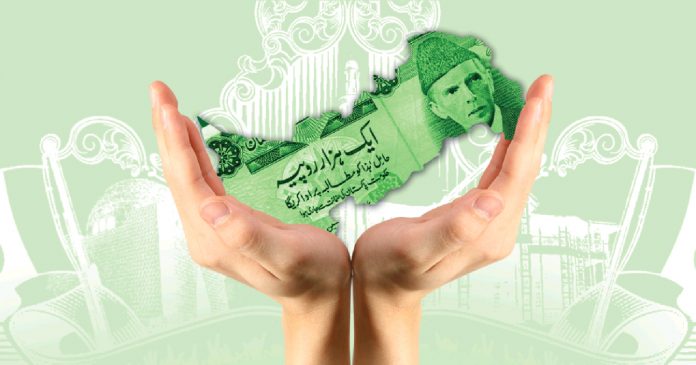LAHORE: The governments’ borrowing policy over the last decade has brought the country to the brink, as the debt servicing has now become the biggest challenge on expenditures front in the federal budget in the wake of huge domestic and foreign borrowings, which might cross Rs2.25 trillion at the end of the current fiscal year of 2018-19.
All Pakistan Business Forum president Syed Maaz Mahmood observed that country’s fiscal policy over the past decade has focused primarily on macroeconomic stabilization in response to the financial crisis, calling for more emphasis on reforms to foster long-term inclusive growth by adapting to advancing technology and deepening global integration.
He said that reforms will require a growth-friendly budget, re-composition to upgrade tax, social spending, and active industrial policies in close consultation with the real stakeholders to achieve sustainable development goals. APBF President said that amid increasing discount rates that have now hiked to 12.25 per cent, Pakistan’s total debt and liabilities skyrocketed to Rs35 trillion, which is rising at high speed in the wake of a soaring budget deficit.
Syed Maaz Mahmood said that there was no justification for making changes in policy rate because it would further increase debt servicing requirements. The policy rate has gone up by 600 basis points with a recent hike in the policy rate of 150 basis points and it seemed at only achieving stabilization and there was a significant increase in real positive interest rate.
Quoting the data of the Pakistan central bank, he informed that in the first nine months period of the current fiscal under the rule of the incumbent regime, the total debt and liabilities went up by Rs6 trillion, increasing from Rs28.87 trillion in June 2018 to Rs35 trillion till end March 2019.
The total debt and liabilities in the percentage of GDP have touched 91.2 per cent.
The overall debt and liabilities have pushed up at a more accelerated pace owing to an increased budget deficit and its financing requirement and hike in discount rates. The policy rate has been increased by 150 basis points, going up to 12.25 per cent from 10.75 per cent. Pakistan’s total debt stood at Rs33.026 trillion, including government domestic debt Rs18.17 trillion and Public Sector Enterprises debt Rs1.378 trillion. Total liabilities stood at Rs2.067 trillion till end March 2019.
The external debt and liabilities have crossed $105 billion mark till end March 2019. The country’s external debt and liabilities (EDL) have gone up to $105.841 billion from $95 billion during the first nine months of the current fiscal year of 2018/19, posing serious challenges on debt servicing. The EDL increased $10 billion under the tenure of the incumbent regime.
The disbursement of foreign loans has so far remained slow during the current fiscal year, but the reliance on foreign debts is on the rise owing to external account gap. Current account deficit, however, narrowed 30 per cent from $19 billion in the last fiscal year, and it is projected to fall to $12.5 billion till June-end.
It is to be noted that the country owes a debt to Paris Club ($11.3 billion), multilateral and other donors ($27 billion) and international bonds such as Eurobond and Sukuk ($12 billion). The country has also obtained commercial loans to the tune of $8.8 billion and a short-term loan of less than one year stood at $1.1 billion. The outstanding loan of the International Monetary Fund (IMF) stood at $5.765 billion.




